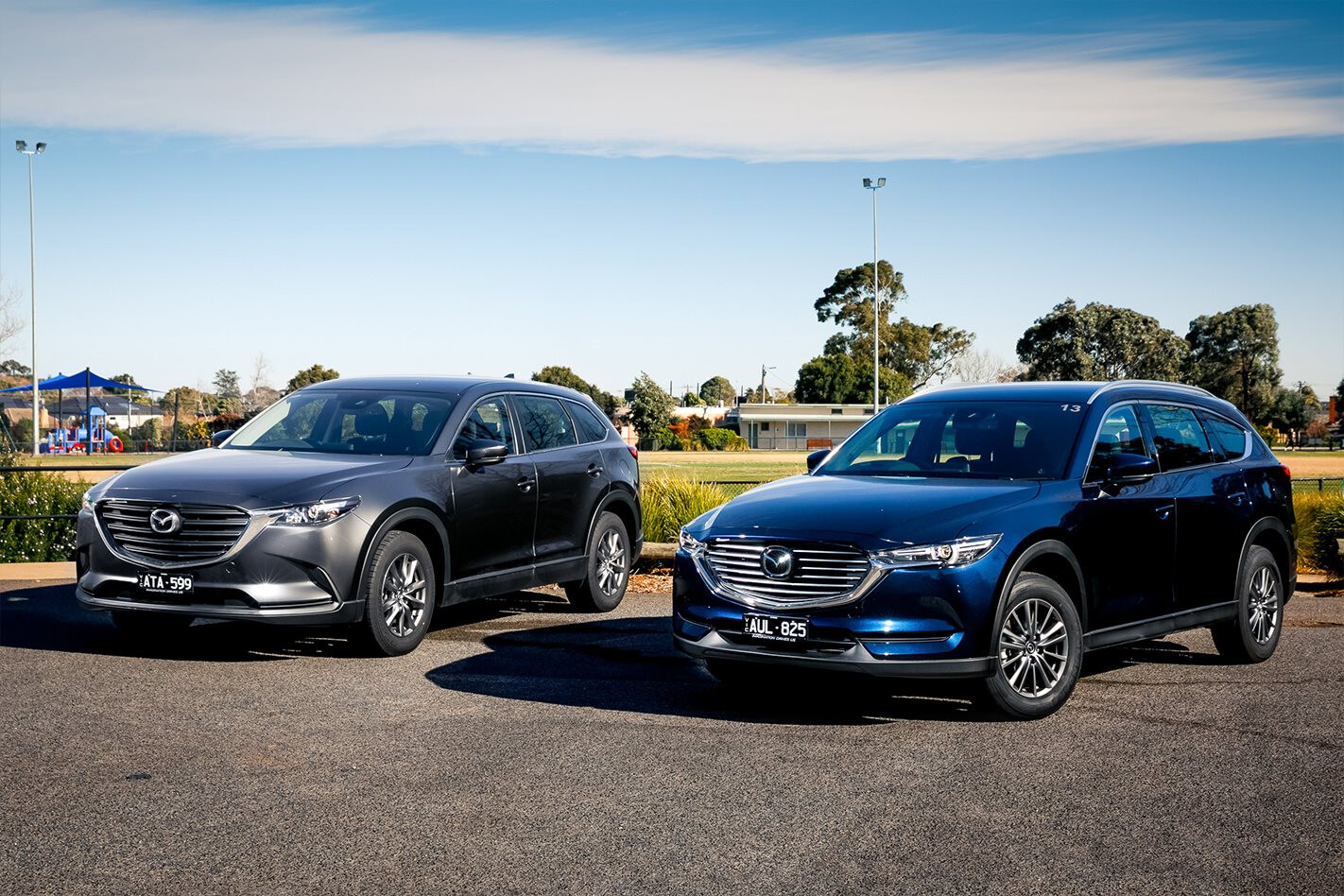
UPDATED January 2023: The Mazda CX-9 seven-seat SUV has performed strongly since its 2016 launch thanks to ample interior space, generous standard features and an ample 2.5-litre turbocharged petrol engine.
The CX-9 set the affordable large SUV space on a different course, trading the segment’s prior sloppy dynamics and cheap cabin materials for Audi Q7 chic on a budget.

The CX-9’s one weakness remains the lack of a diesel offering, as available in the two-row CX-5, which has the potential to provide better towing power and return leaner fuel economy on highways.
While the seemingly obvious solution would be to shove an oil burner under the CX-9’s bonnet, Mazda opted instead to create a stretched version of the CX-5 with a diesel option, a car we now know as the CX-8. Born specifically for the Japanese market – where the wide-body CX-9 is not sold – the CX-8 first arrived in Australia in 2018.

In February 2020, Mazda introduced a 2.5-litre four-cylinder petrol engine to the CX-8 range – also sourced from the CX-5 – to make it more attractive to urban buyers. A facelift is due to land in Australia in March 2023, also lifting visual cues from the smaller CX-5.
To those not in the know, the CX-8 and CX-9 look very similar and perform much the same family-focused mission, albeit with different powertrains. But there are enough differences between them to sway buyers who may not be too fussed about what’s under the bonnet one way or the other.
Let’s see how they stack up.
Jump ahead to what interests you
- What do you get?
- Standard features
- CX-9 and CX-8 dimensions
- Space and comfort
- Which has the bigger boot?
- Performance and fuel economy
- Ride and handling
- Should I consider other rivals?
- Summing up
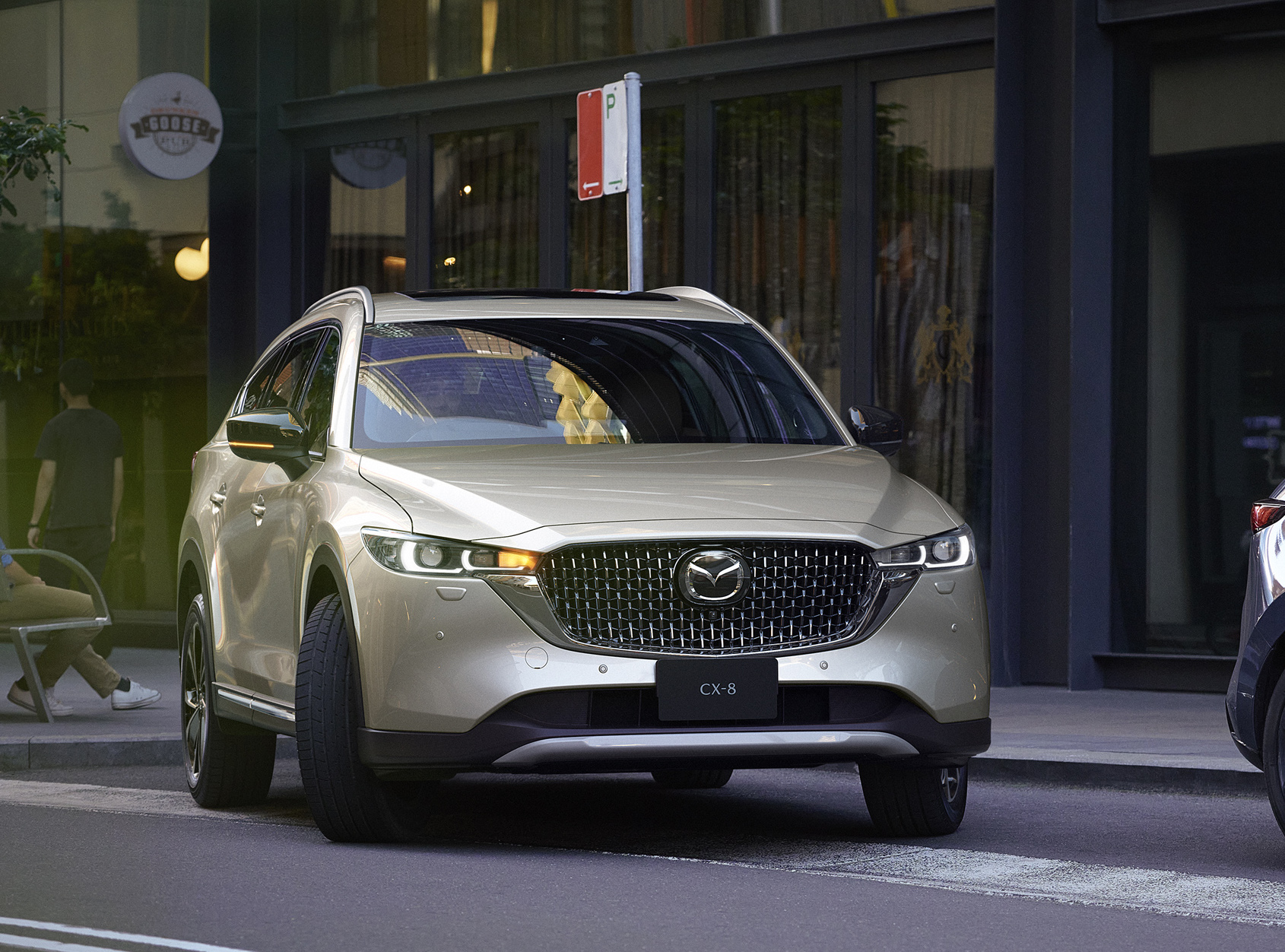
What do you get?
The CX-9 has six trim grade specifications: Sport, Touring, GT, GT SP, Azami and Azami LE. Each has the option of an FWD or, for an additional $4000, AWD – except for the Azami LE, which is AWD only. Pricing ranges from $47,250-74,710 before on-road costs.
In October 2022 the CX-9 range was treated to some small tweaks. The sporty GT SP grade was added with its red stitching, while GT grades and up scored a 10.25-inch infotainment screen.
The CX-8 has a $6760 lower starting price of $40,490 and tops out at $69,890 before on-road costs.
It originally had just two spec grades – Sport and Asaki – giving CX-8 the smallest line-up in Mazda’s stable. This was extended with the 2020 update to also include mid-spec Touring and GT versions, which filled a huge price gap between variants.
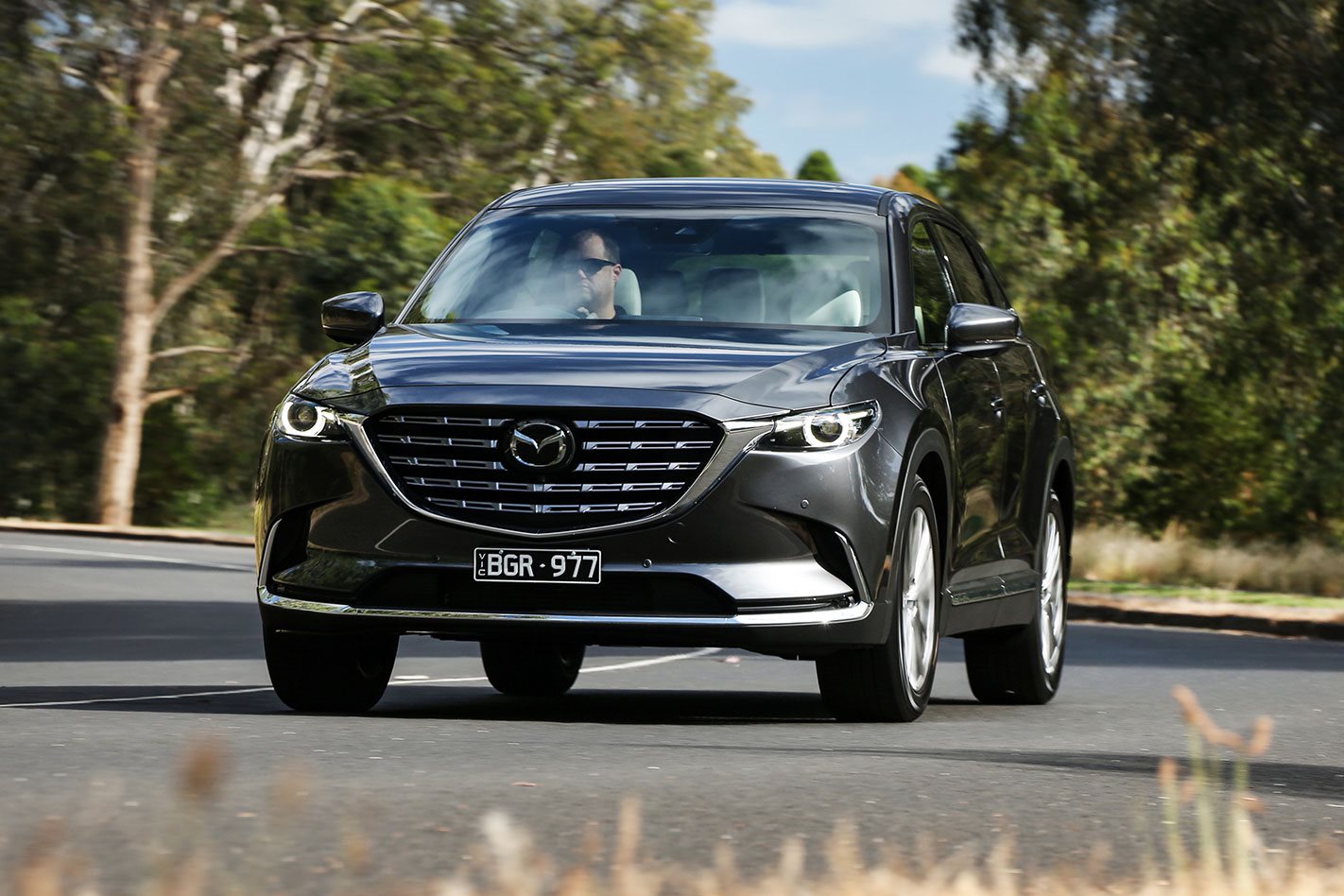
In 2021 two more variants were introduced: the Touring SP and Asaki LE, which added a few features over their namesakes.
In January 2022, Mazda dropped the FWD diesel powertrain, which sold in very low numbers compared to the petrol FWD.
The current range sees all six variants (apart from the Asaki LE, which is AWD only), offered in petrol FWD or diesel AWD, with the latter costing an additional $4000.
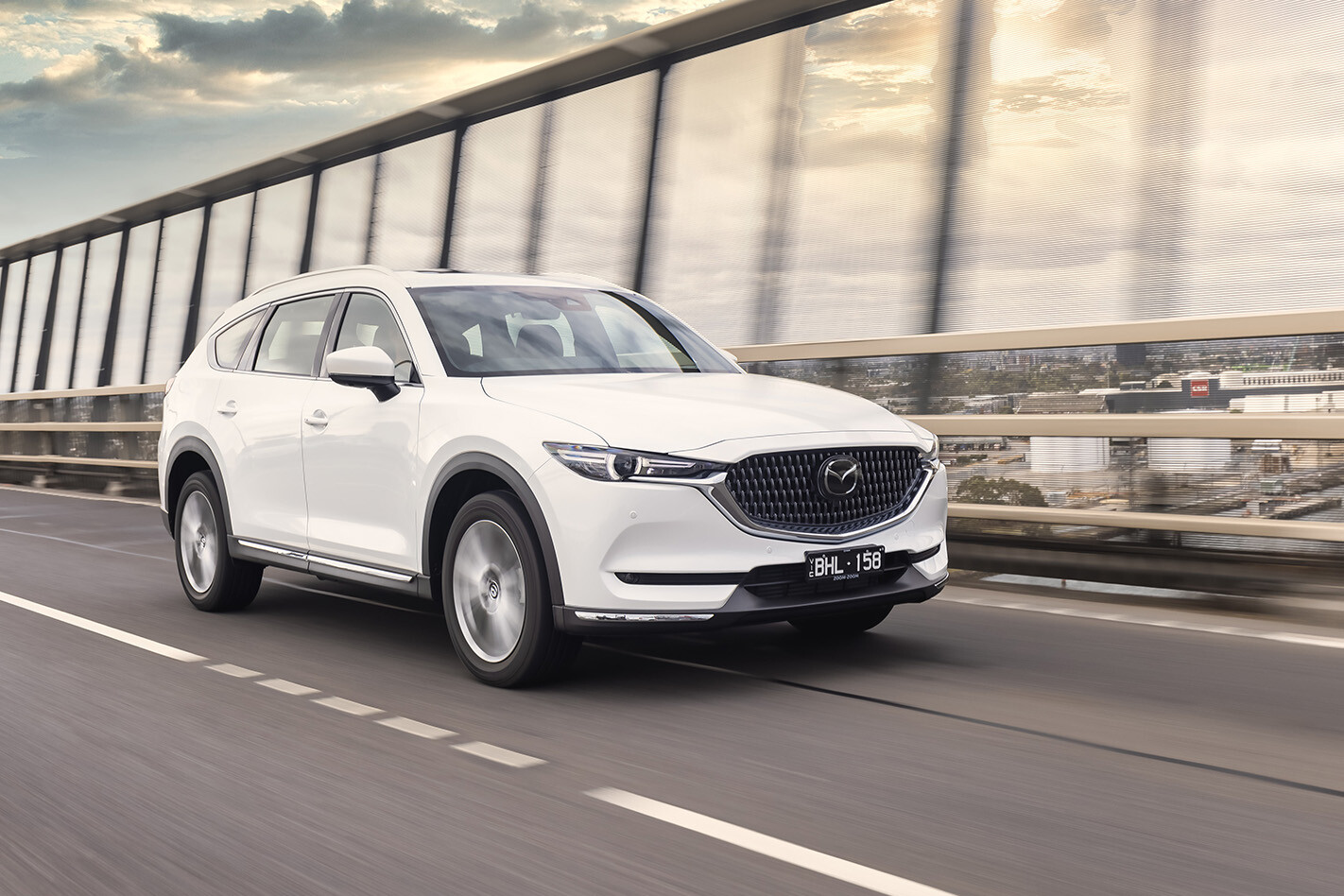
Standard features
Both cars’ entry-level CX-8 and CX-9 Sport grades are very well equipped and have a premium feel despite their cloth trim. See how the variants line up below:
| Mazda CX-9 vs CX-8 Sport spec battle | |
|---|---|
| CX-9 Sport | CX-8 Sport |
| 18-inch alloy wheels | 17-inch alloy wheels |
| 7-inch infotainment system | 8-inch infotainment system |
| Apple CarPlay and Android Auto (wired) | Apple CarPlay and Android Auto (wired) |
| Satellite navigation | Satellite navigation |
| DAB+ digital radio | DAB+ digital radio |
| Head-up display | LED headlights and tail-lights |
| LED headlights and tail-lights | Halogen daytime running lamps |
| Halogen daytime running lamps | Cloth upholstery |
| Cloth upholstery | Leather-wrapped steering wheel and gear shifter |
| Leather-wrapped steering wheel and gear shifter | Three-zone climate control with rear air vents |
| Three-zone climate control with rear air vents | Push-button start |
| Push-button start | Six-speaker audio system |
| Six-speaker audio system | Rain-sensing wipers |
| Rain-sensing wipers | Reversing camera |
| Reversing camera | Power-folding door mirrors |
| Power-folding door mirrors | Auto-dimming rear-view mirror |
| Auto-dimming rear-view mirror | Tyre pressure monitoring |
| Tyre pressure monitoring | Adaptive cruise control |
| Adaptive cruise control | Lane-departure warning |
| Lane-departure warning | Rear cross-traffic alert |
| Rear cross-traffic alert | AEB |
| AEB | |
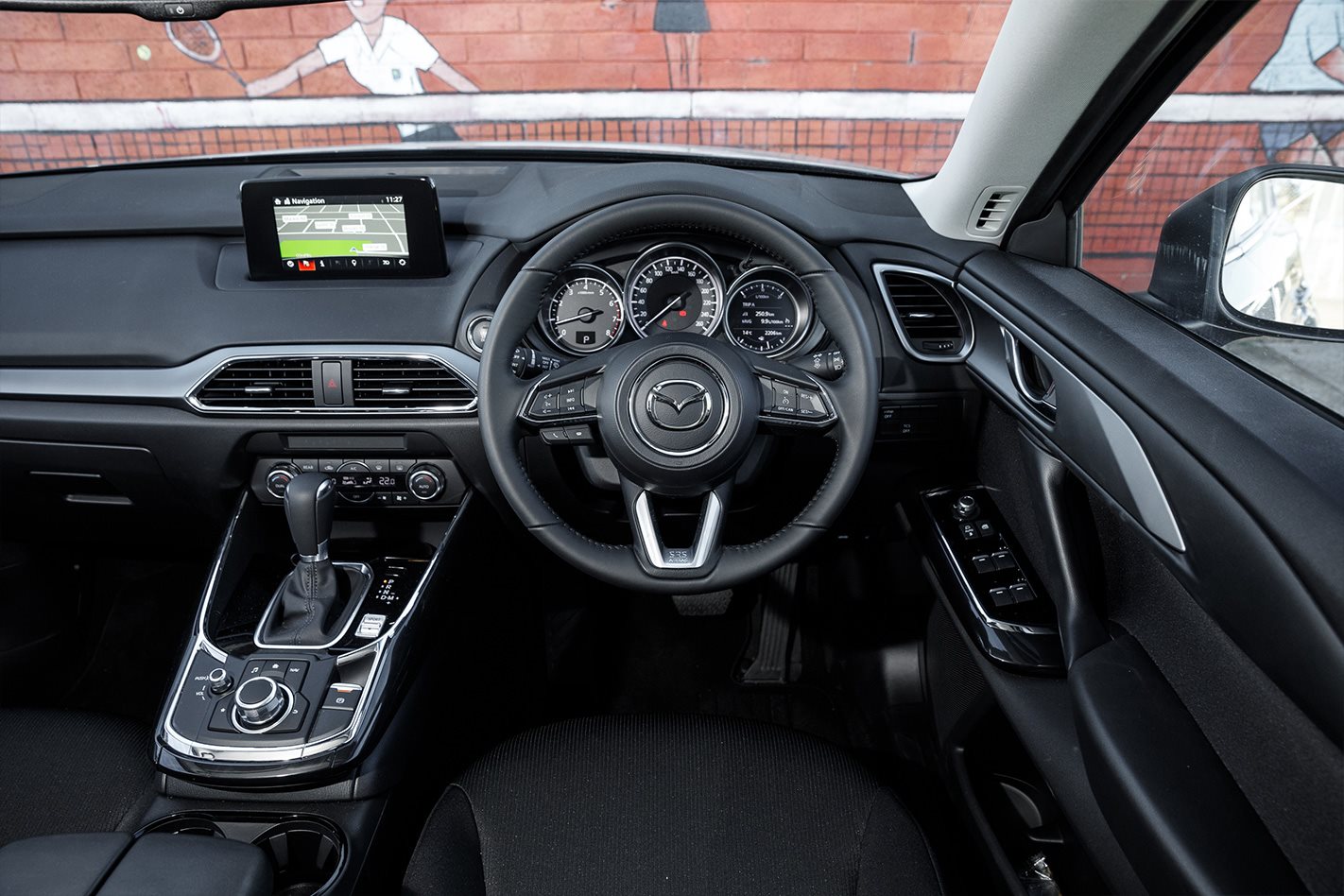
The bigger CX-9 comes standard with 18-inch alloys, while the CX-8 Sport rolls on 17s.
The plush CX-9 Azami and CX-8 Asaki are each brimming with features that are extra-cost options in some pricier Euro SUVs, such as; Nappa leather upholstery, heated front seats premium sound system, remotely operated tailgate, multi-element LED headlights and 360-degree view parking monitor. The LE flagships bring middle-row captain’s chairs
The CX-9 Azami has 20-inch alloys, the CX-8 Asaki 19s. Both carry five-star ANCAP safety ratings.
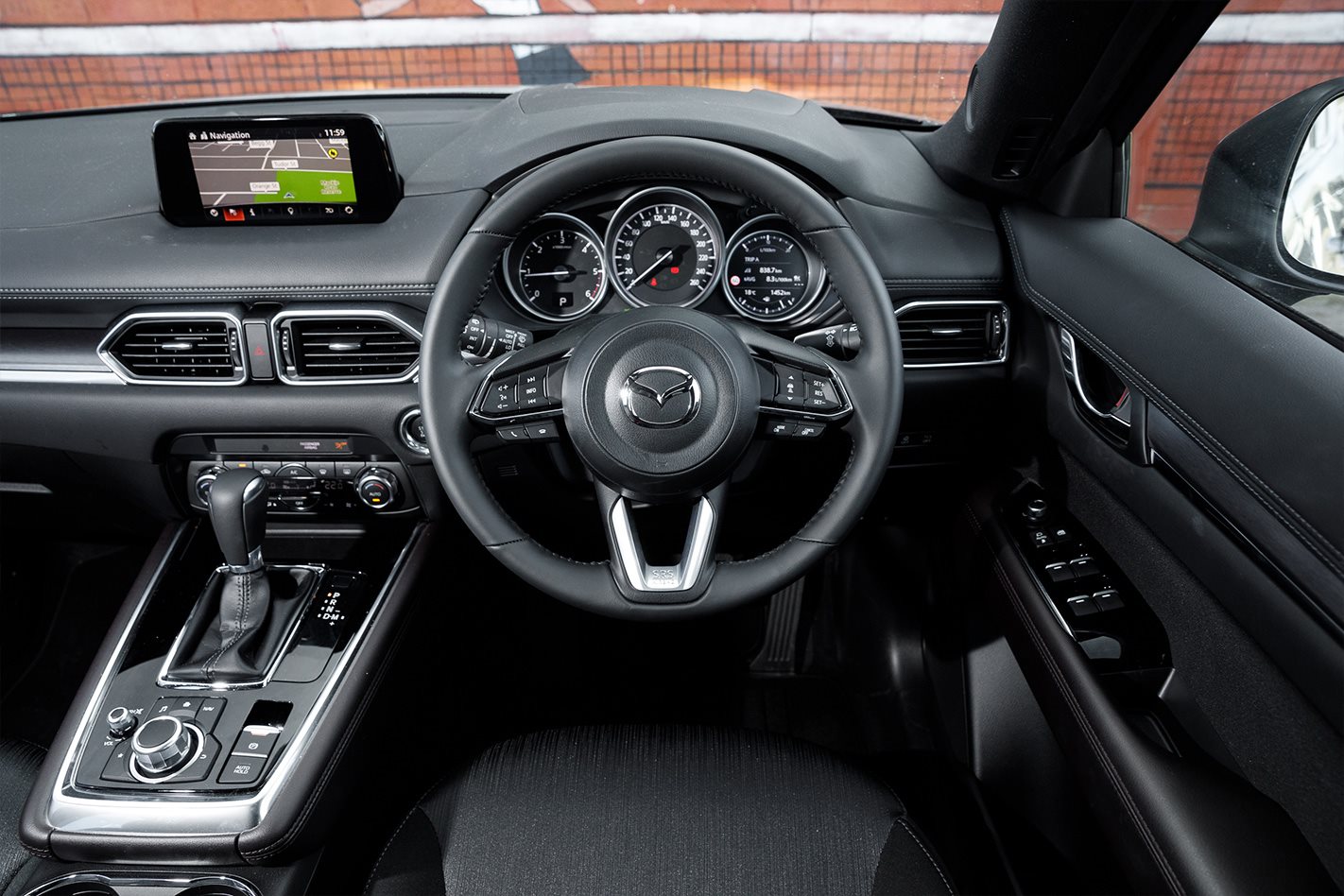
CX-9 and CX-8 dimensions
The CX-9 is 5075 millimetres long and 1969mm wide, making it 175mm longer and 129mm wider than the CX-8 (4900mm, 1840mm).
However, both have the same 2930mm wheelbase. This provides the CX-8 with the same legroom in the first two rows. The CX-8’s shorter and narrower shell compromises elbow room slightly, but makes parking a little easier.
Space and comfort
Both cars are very quiet. The CX-8’s diesel naturally dishes out a more gravelly engine noise, but it’s a lot quieter than the CX-5 diesel, with plenty of sound insulation that’s evident by the weight of the bonnet. They also ride very smoothly.
The CX-9’s front seats feel a little wider and more embracing, and second-row seats also feel more comfortable – you sit in them whereas you feel like you’re sitting on the CX-8’s middle pew.
Second-row seats
The CX-9’s second row is comfortable and delivers a good view over the front seats and out the side windows with plenty of headroom. In the Touring, GT and Azami versions, the central fold-down armrest has a handy storage bin and a USB ports.
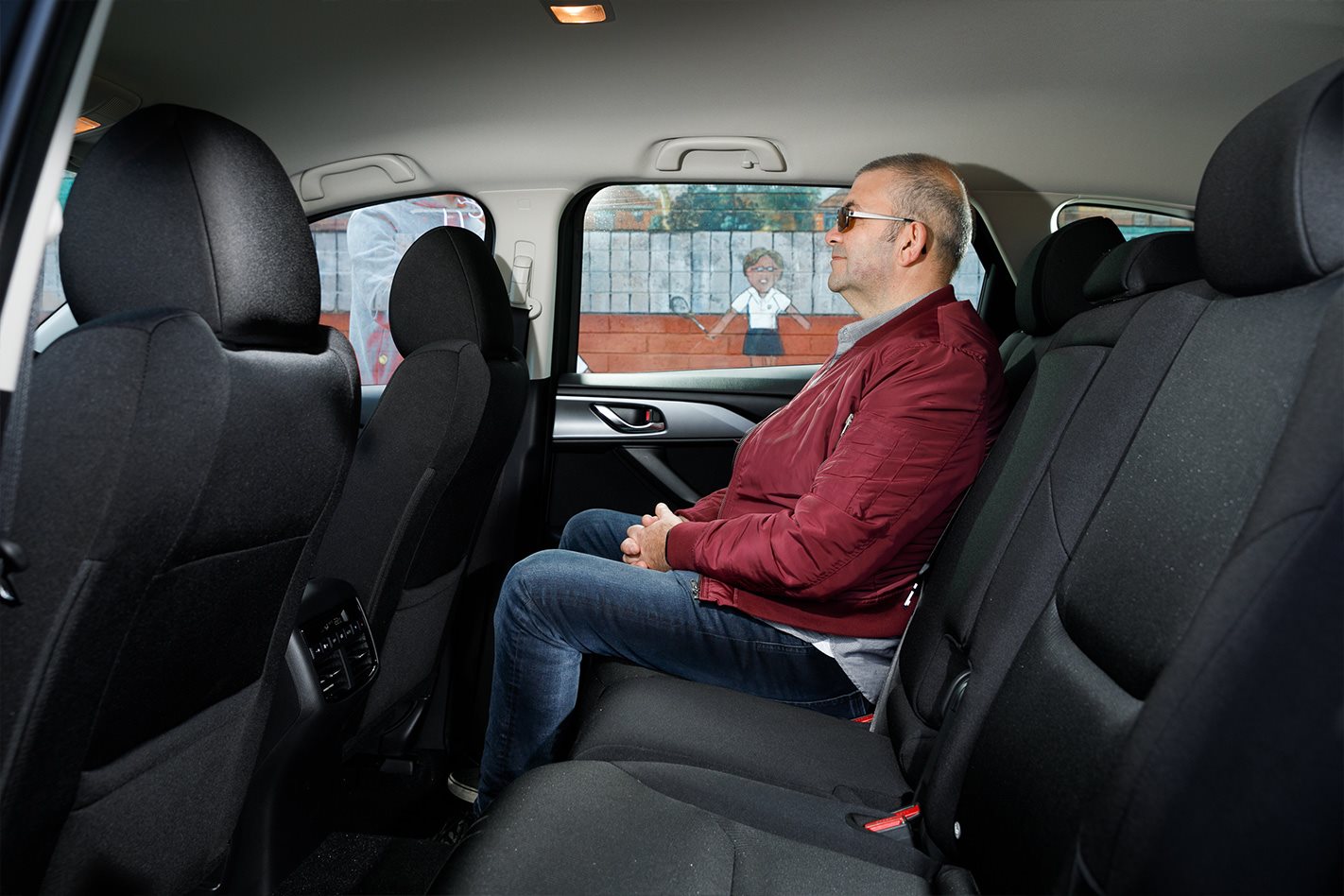
The middle row bench in the CX-8 has to be clever to make up for its smaller size. The bench can slide forward and aft, and the two-position backrest reclines 22-30 degrees from vertical. The rear doors open out to 80 degrees to make getting into the third row easier. All versions have a fold-down centre armrest with storage and two USB sockets. The two outboard seats in the Asaki and Asaki LE are heated.
The range-topping CX-9 Azami LE and CX-8 Asaki LE have two very plush power-operated captain’s chairs with heating and ventilation in the second row. This not only ups the levels of luxury, but means you can leave child seats/baby capsules anchored in place and still easily access the third row.
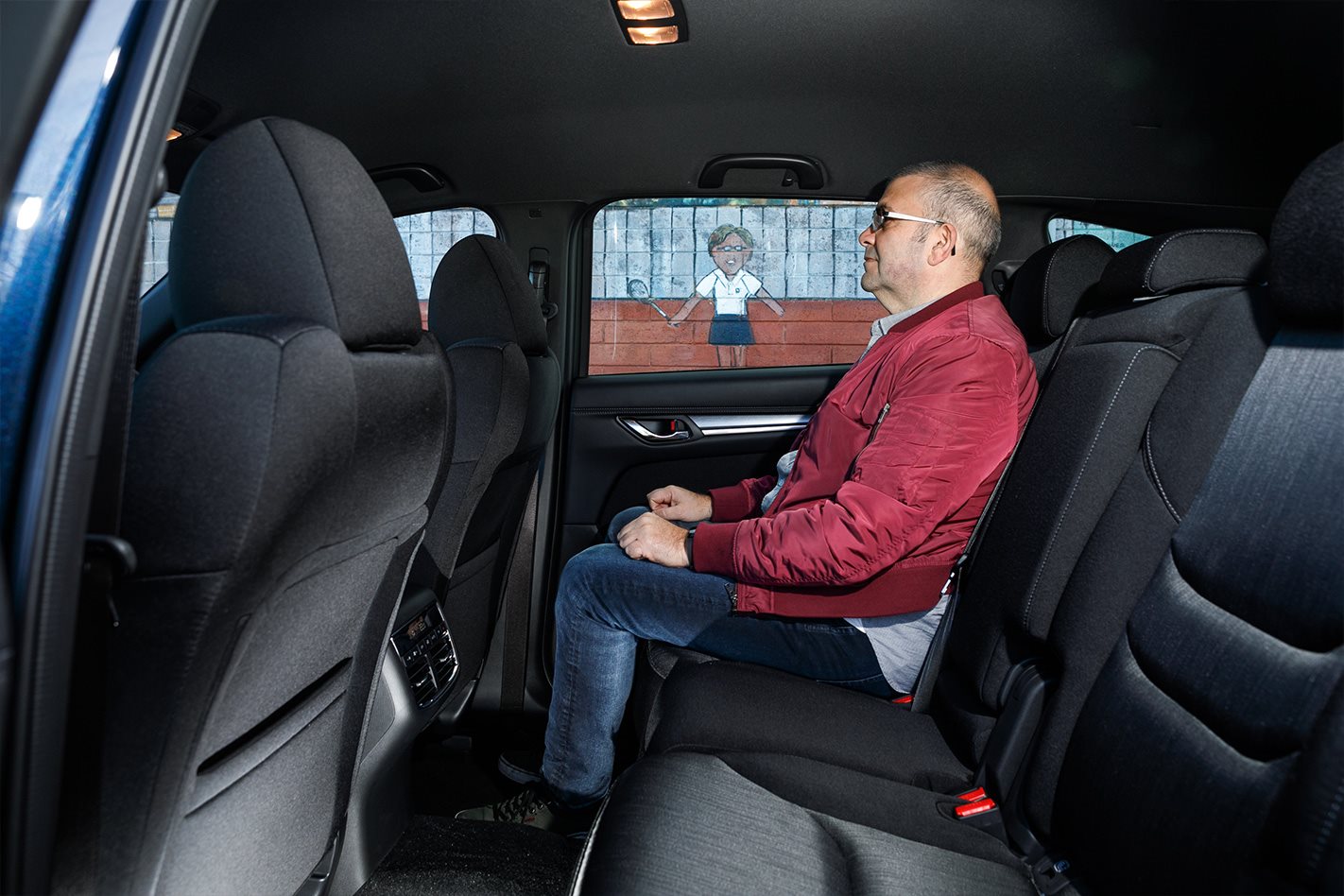
Third-row seats
The CX-9’s third row provides usable accommodation for adults rather than being a kids-only proposition, while the CX-8’s back seats are designed to accommodate occupants up to 170 centimetres tall, which makes it a little tight for most adults. Once they squeeze in though, most people will cope with a 20-minute run across town.
Children will have no problems, with heaps of leg and elbow room in each car.
Neither car has third-row air vents, but their second rows have dedicated vents and independent air-conditioning controls that also benefit the rear seats.
Which has the bigger boot?
With the third row in use, the CX-8 holds 209 litres of luggage space, which Mazda claims is just enough for two golf bags. There is also a sub-boot below the main boot floor with a large opening and a depth of 100mm, offering 33 litres of underfloor storage space, which is especially useful for valuable or fragile items.
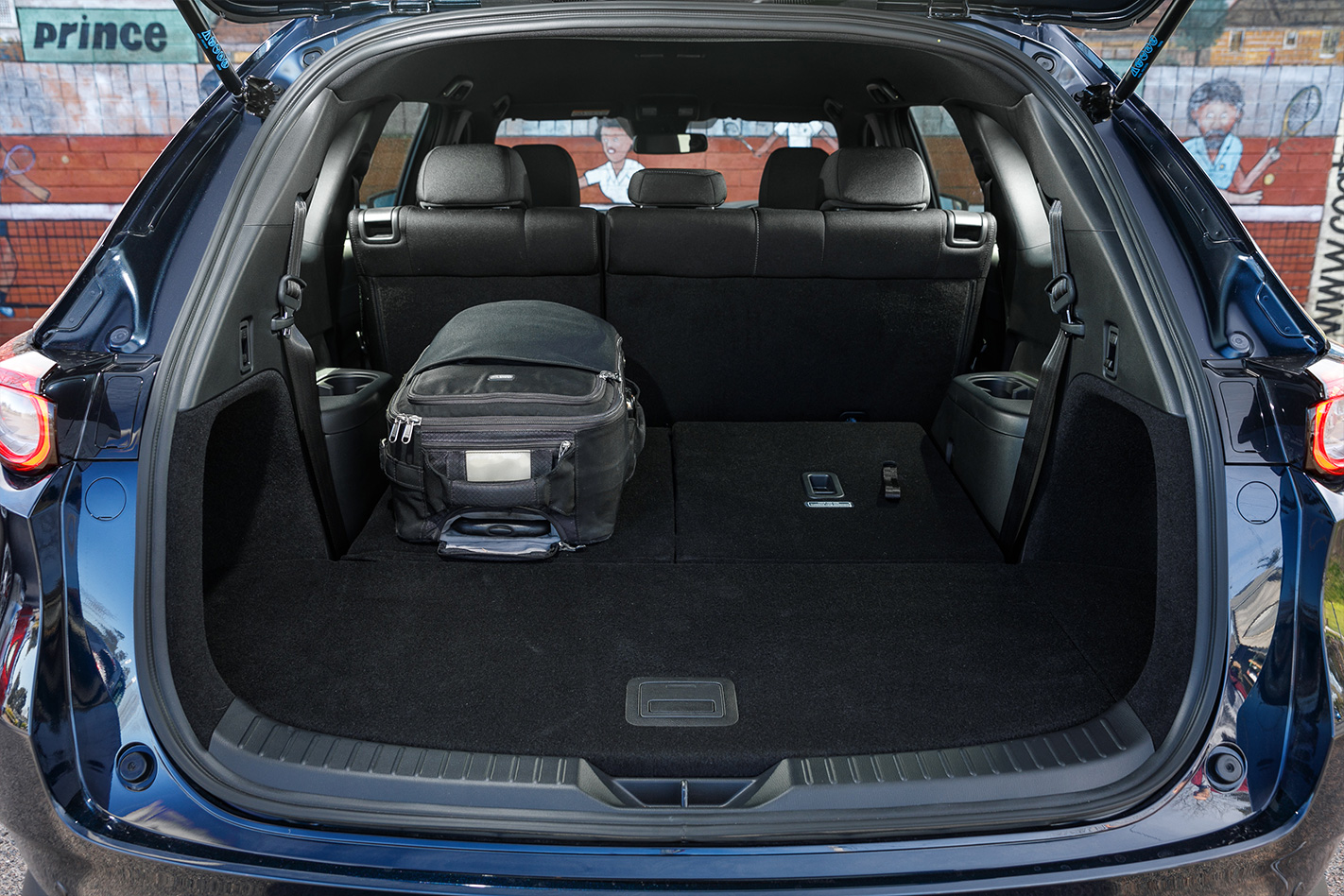
With the third-row seats folded down, the available luggage capacity increases to a sizeable 742 litres in CX-8. Folding down both the second and third-row seatbacks brings a capacious 1727 litres and creates a flat floor space large enough to hold two bicycles. That last figure is slightly more than the CX-9, thanks to the truly flat-folding rear seats.
The CX-9’s additional width increases luggage space behind the third row to 230 litres. In five-seat mode that grows to a substantial 810 litres. Fold the 60:40 middle-row seats down and there’s a van-like 1641 litres of space – enough to accommodate big pieces of furniture.
Both the CX-8 and CX-9 can tow loads up to 2000 kilograms braked, or 750kg unbraked.
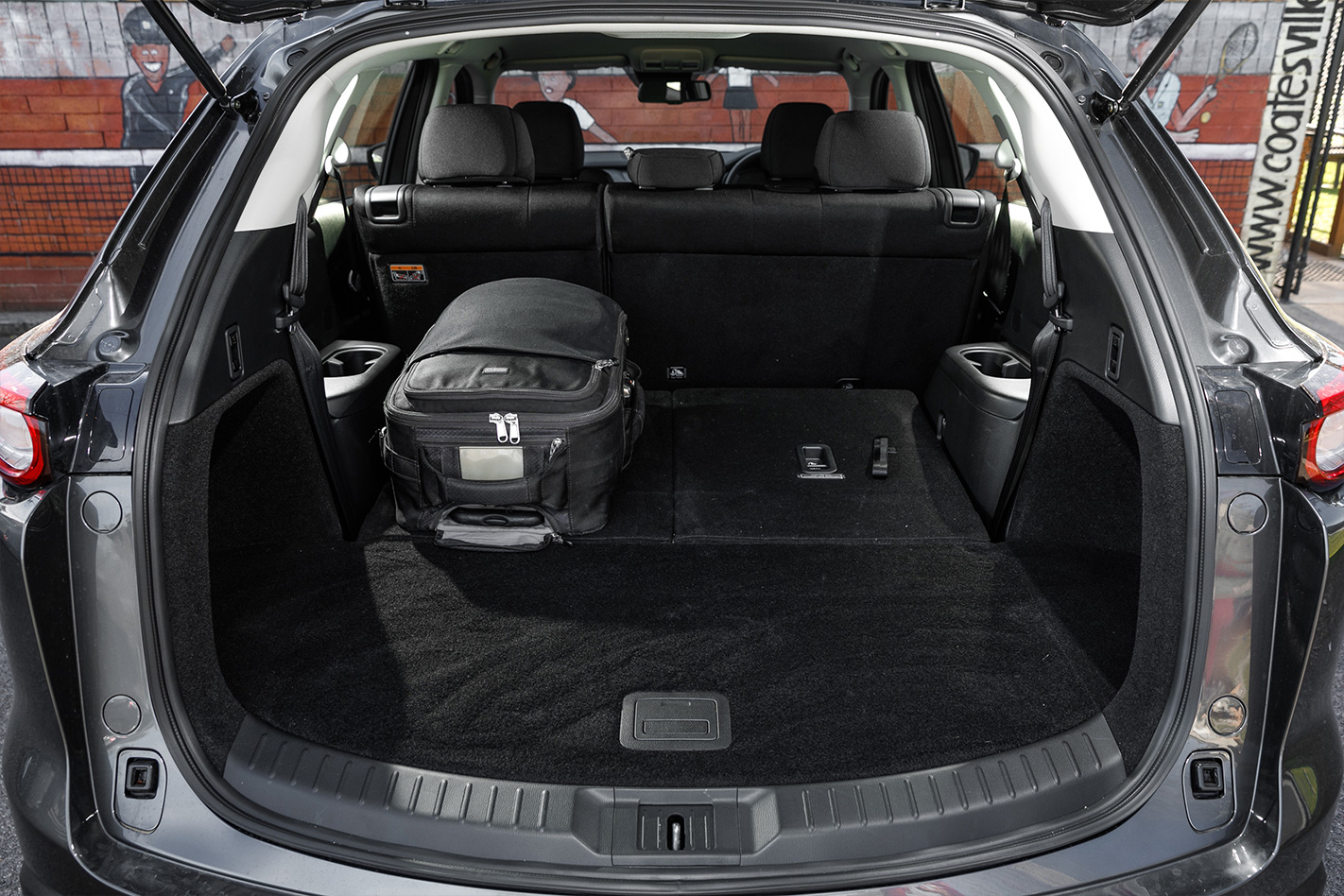
Performance and fuel economy
The CX-9’s 170kW/420Nm 2.5-litre four-cylinder turbo petrol consumes as little as 8.4 litres/100km (ADR 81/02 combined cycle), which isn’t bad for a large SUV.
The petrol engine responds keenly from low speeds and pulls with plenty of guts for overtaking. It’s a sporty engine that teams well with a six-speed automatic to give the CX-9 a surprising turn of speed.

The CX-8’s naturally-aspirated 140kW/252Nm 2.5-litre petrol engine has significantly less power and torque, so has to work harder resulting in a slightly higher official combined fuel economy rating of 8.5L/100km – the same engine in the smaller CX-5 consumes 7.5L/100km.
The CX-8’s 2.2-litre turbocharged diesel engine (also shared with the CX-5) consumes just 6.0L/100km in the ADR 81/02 combined consumption cycle.
Although it may have the same 140kW peak power figure, the diesel pumps out a healthy 450Nm of torque. Linked with a six-speed automatic, the grunty CX-8 diesel has no trouble pulling even with a full complement of passengers.
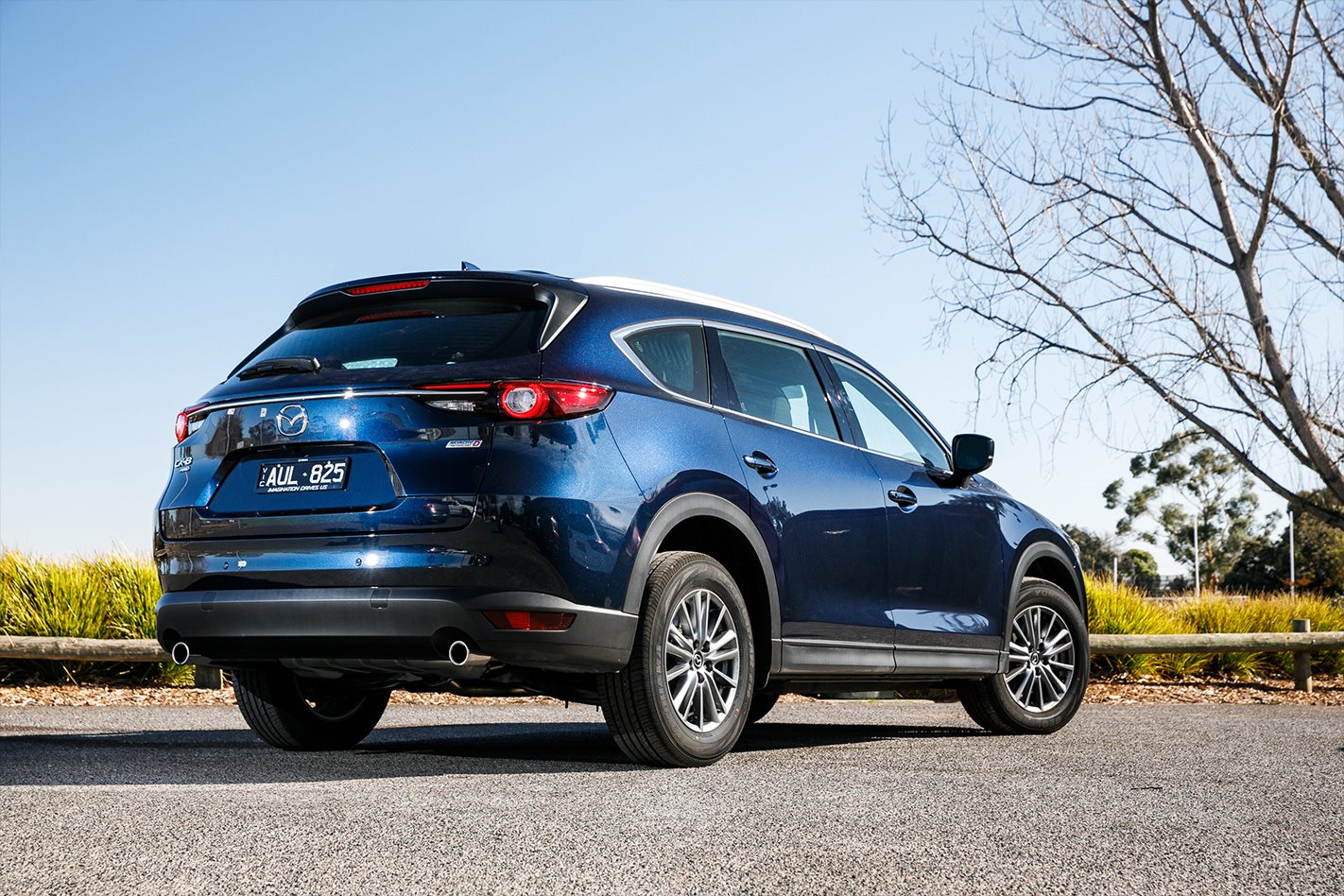
Ride and handling
The Mazda CX-9 was lauded as the best-handling large SUV at launch, and remains a genuinely good drive – despite its bulk and high centre of mass. Its greatest strengths are a suspension that brilliantly blends comfort and manoeuvrability, and slick and accurate steering – particularly with the AWD versions.
Despite its slightly smaller dimensions, the diesel CX-8 is about 110kg heavier than the CX-9 due to the heft of its diesel powertrain and additional soundproofing needed. So it drives like a heavier, softer-riding CX-5.
The CX-8’s narrower footprint means it doesn’t feel quite as planted as the CX-9, but overall body control and general dynamics of both the diesel and petrol versions are good and able to shrug off road imperfections. The narrow CX-8 is one of the easier seven-seat SUVs to park, too.
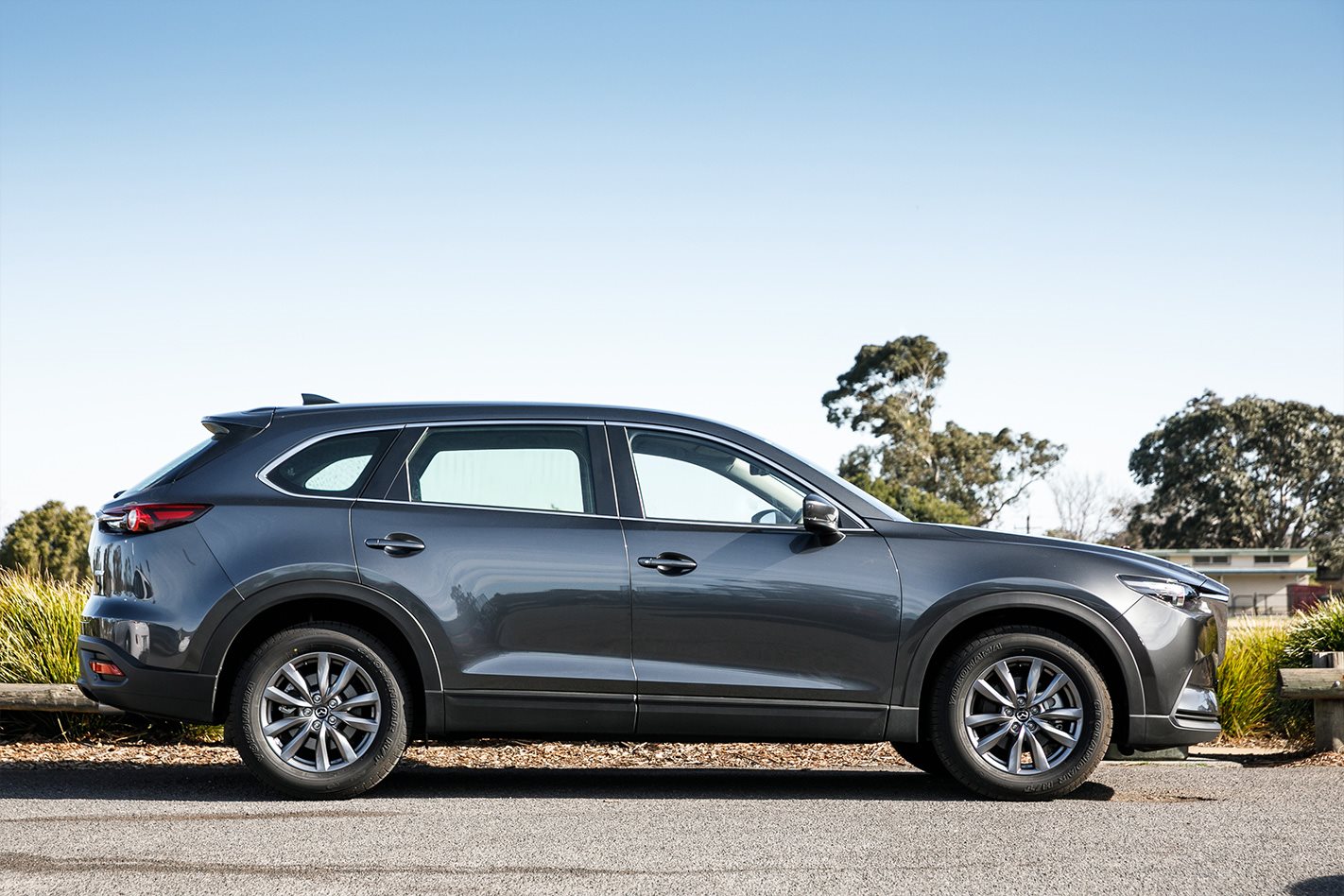
Should I consider other rivals?
The CX-8 and CX-9 both remain sound family SUV choices, but lately there have been some excellent new releases that were blown away in previous-gen form by the CX-9.
From the Koreans, the new Kia Sorento and Hyundai Santa Fe both offer hybrid powertrains and much improved dynamics from previous generations. The same is true of Toyota’s latest Kluger.
As for CX-8 rivals, Mitsubishi’s new Outlander is much larger than the car it replaces and, although not as generous as the CX-8 for seven, its dimensions are pleasingly compact. The same can be said of the latest Nissan X-Trail, though it’s only available with seven seats in lower-spec trims.

Summing up
Both large SUVs have a place in the Australian market, and that’s a fact further reinforced by the facelifted CX-8 arriving here shortly, as well as Mazda considering the whole plethora of next-gen CX-60 and CX-90 SUVs without axing the current line-up.
Despite coming with a smaller starting price, as well as both petrol and diesel engine options, the CX-8 remains behind the dearer CX-9 for sales – but it has succeeded in bringing people seeking a diesel three-row SUV to Mazda showrooms.
A couple of things going against the CX-8 include less cargo space and the fact the diesel isn’t the best choice if most of your driving is short inner-city runs. And while there is a petrol version, it isn’t quite up to the job of hauling a fully laden large SUV like the CX-9’s turbo is.



